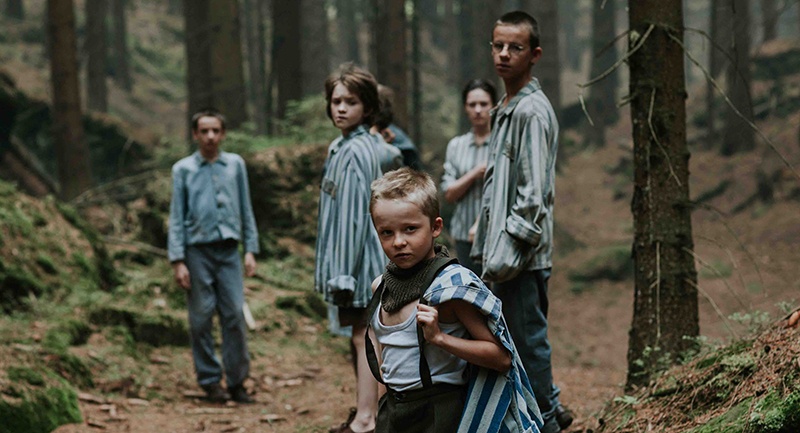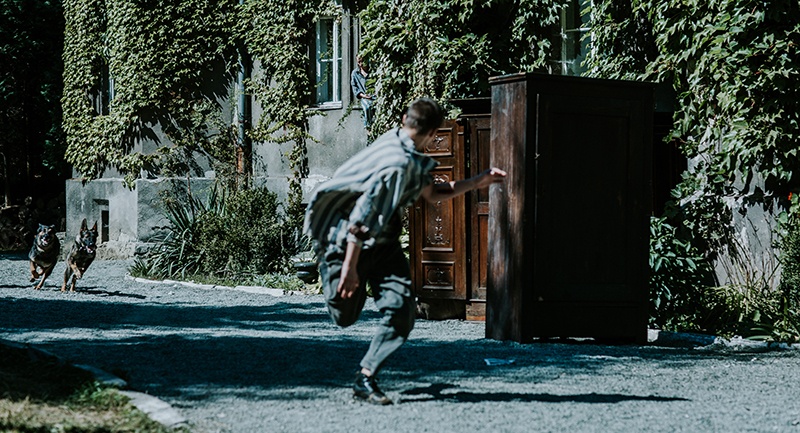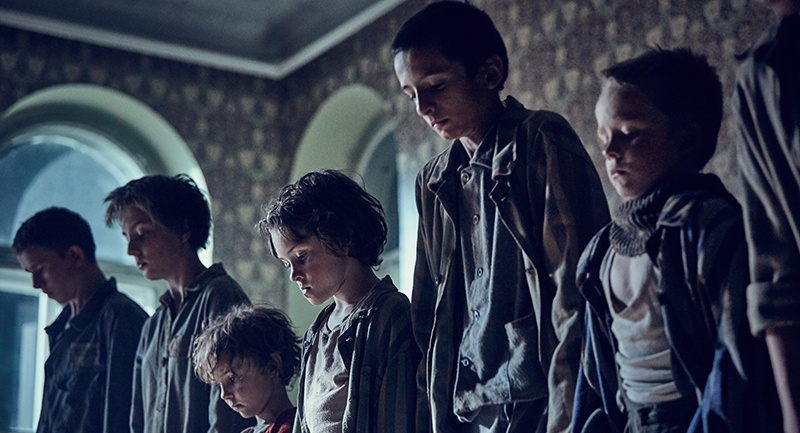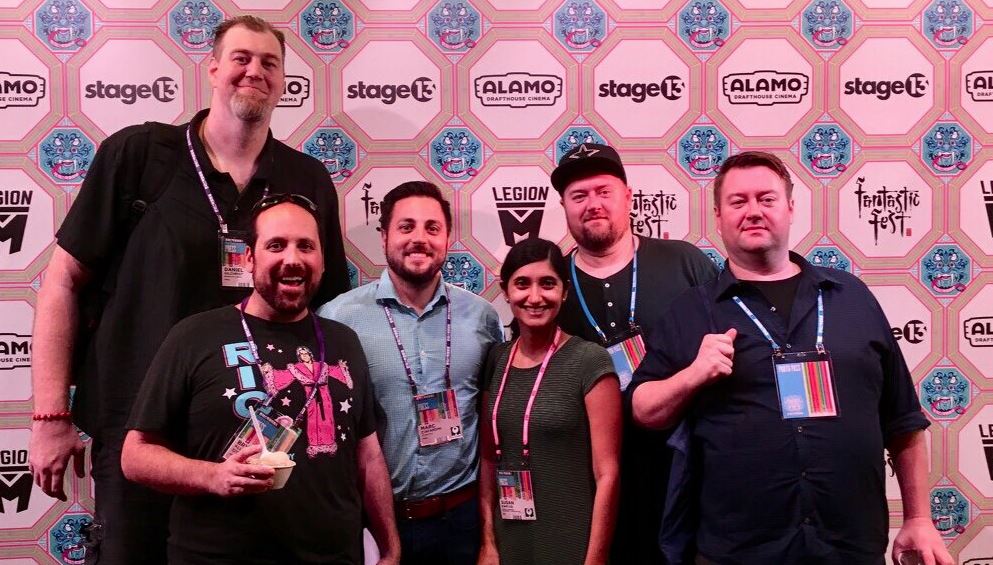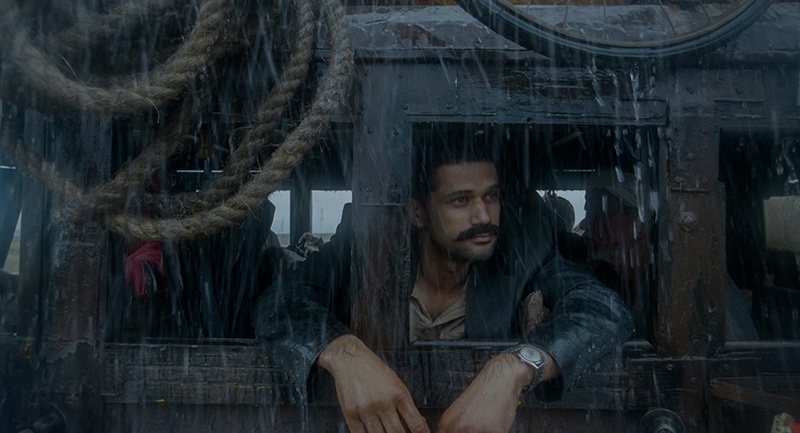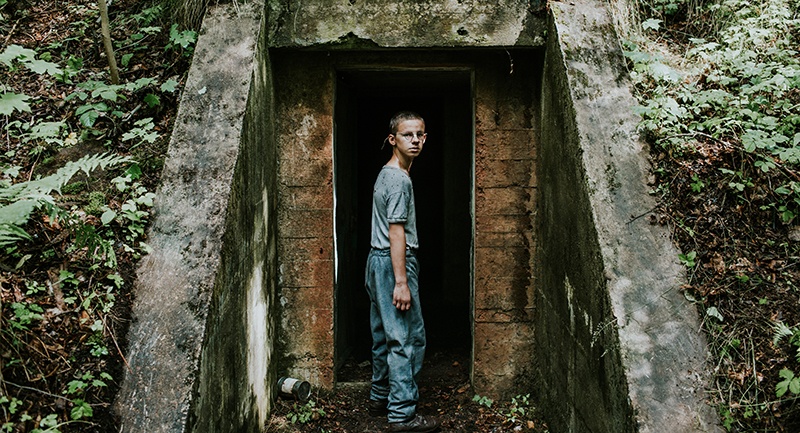 At Fantastic Fest, we fell in love with Werewolf, the second feature film from Polish writer-director Adrian Panek. His bleak narrative tells the story of a group of children who, having just survived the Holocaust, find themselves preyed upon by a pack of wolf dogs. As stated in our capsule review (read it here), there’s something magnetic about the film. It’s a sly powerhouse, and so much so that to say it is a masterpiece would be an understatement. Panek’s film is as beautiful as it is bleak, but the film offers something not often found in genre films: hope.
At Fantastic Fest, we fell in love with Werewolf, the second feature film from Polish writer-director Adrian Panek. His bleak narrative tells the story of a group of children who, having just survived the Holocaust, find themselves preyed upon by a pack of wolf dogs. As stated in our capsule review (read it here), there’s something magnetic about the film. It’s a sly powerhouse, and so much so that to say it is a masterpiece would be an understatement. Panek’s film is as beautiful as it is bleak, but the film offers something not often found in genre films: hope.
We caught up with the Polish-born director to discuss the themes in his film as well as his experience making it.
GoSeeTalk: Adrian, this was a thrilling movie. It’s not easy to get through, but it has a captivating story and a wonderful ending. How long have you been wanting to tell this?
Adrian Panek: I’ve been thinking about this since my debut in 2011, and I got the first version of the script done two years after that. I have been working with my producer to get funds for the film, but this was tougher than most to finance. It’s not a traditional story. In Poland you have dramas, period piece movies, love stories, crime stories, etc. but with Werewolf it was always going to be different – you don’t get films like this in our cinemas that often. It’s a thriller with horror elements, and the only director who’s been able to do anything like this is, you probably know, Roman Polanski. It’s a dark fable, and it took a while to get the money. We found funds in Poland, Germany, and Holland; it was a very European production.
I noticed that in the credits that this made with help from the Polish-German Film Fund. How, in terms of money, did that assist you?
The Polish-German Film Fund was helpful but was not a major backer. They provided us with 100,000 Euros. With that, we hired the fantastic German actor, Werner Daehn, and also paid for things like insurance. But we did more of the creative things in our film with the funds we received from Amsterdam and the Netherlands. That was arranged through our co-producers, and we were able to work on things like sound design, color correction, and special effects which were also done over there.
The film, although entirely bleak, was just gorgeous and the visuals were so striking. Was it your goal to offset the horrific tale with beautiful cinematography? There’s an interesting balance between the content, and how you made it look like moving poetry.
That decision was decided when I was trying to help set the tone of the movie. It’s quite a tough film – you have a post holocaust situation for the kids who have lost families in the concentration camp, and now they are trying to get themselves together. I wanted it to be a thriller, or a dark fable, but I also wanted it to feel real so you could believe in it. It was crucial to strike a balance between the two.
But what you say about the beauty in the film is important because I also wanted to make a statement about nature. I wanted to strike a balance and find on the edge between man and nature. What the kids experience alone in the orphanage is an extension of the concentration camps. There is something cruel about killing, and it mirrored what happened before they were released from the camp.
So when I wanted to make the movie, I set out to contrast the cruelty and, in a way, the ignorance of the children with the beauty of nature. The duality fascinated me, and so showing beautiful scenery against a dangerous plot was my goal.
Picking up on the term you used, “fable,” would you go as far as to say this was a fantasy or a fairy tale? The ending seems a little too good to be true, like a metaphor for people putting harsh differences aside to coexist. Or, like you said, the balance between man and nature when the children and the dogs unite.
I had been thinking a lot about the Brothers Grimm stories that are cruel and dark but also have some surprising twists at the end which you can kind of call of moral. It’s a movie about darkness, and the beast inside, but I wanted to make a movie about something light, about what makes us human.
In many ways, we behave like animals, so that was another plot point I wanted to expand on. It kind of shows tremendous insight into human behavior, so it’s not that far-fetched to think that we can expect hope for something bright at the end. You can call it a “fairy tale.”
When you have an entire movie where children are in turmoil, you would expect to get used to it. But this was a perpetually frightening film which kept tensions high. In one scene, the group thinks they lost the character Baby in the dumbwaiter. How did you prepare them for the material in the story?
I’ve worked with animals and kids before, but not in this number. I knew you had to be very prepared, so we spent a lot of time looking for the right kids. When we found the two main characters, the two boys, I knew we had the core of the cast. After that, the rest of the actors were quite simple to add to the film. The youngest is “Baby” who was 6 years old, the oldest was 15, and you have to work differently with each.
For example, with the little girl, she knew the movie was about war. But it was very abstract to her. We told her stories about elves, and that she couldn’t speak because she’s “the elf guardian,” and she had to protect the elves while were shooting.
We were about to shoot that scene with Baby in the dumbwaiter, and I was going to tell her something about the scene. But she surprised me when she started to tell me a story about the dumbwaiter being the home of the elves, and all of the things they have in their tiny home. It made me laugh because she’s got a whole different movie going on in her imagination.
We had the premiere a week or two ago, and when she saw it all on screen, it wasn’t traumatic for her. She, and the other children, had this idea that they were playing and that it wasn’t real. It wasn’t so tough.
There are plenty of scenes that play out with no dialogue where the kids are either looking for food, exploring the orphanage, or just trying not to go mad. My favorite scene is where the kids notice the condensation in the foundation and they are trying to suck the water out of the concrete. It’s so childlike but there’s an undertone of survival. It is hopeless for them, but they never give up hope. What’s your biggest moment of pride? Do you have a favorite scene?
I like jump scares because no one really makes jump scares in Polish cinema. No one teaches it in our film schools, so I had to figure out where so wanted them, how to do them, and how to make them effective. I’m proud there’s more than one jump scare in my film and I hope they work. I really don’t have a favorite scene because I am very proud of many sequences.
But one I really like is the one where the kids are drinking moonshine. It’s very close to a movie from the ‘50s called Ashes and Diamonds which was very well known in Polish cinema. I like that it is shot differently but corresponds with that film because Andrzej Wajda was an important director for me. He was inspiring to me. The kids were quite good, and I am very proud of how much they have given to this film, and that’s why there are so many scenes that I’m impressed by. They are all important to me.
Thanks to Adrian for his time. Werewolf (Wilkolak) premiered at Fantastic Fest 2018 and will begin expanding its release later this year.
